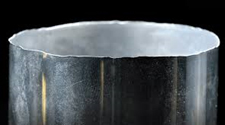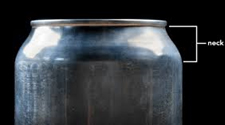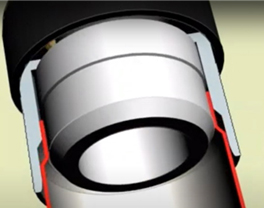Can neck shaping optimization
Sector: Manufacture of metal packaging
Application: Aluminium deformation of food packaging
Solution: CASSIDA FLUID DCE 10
Key Benefits

50% Reduction of lubricant consumption

Reduction of lubricant residues and micelles

Increased food safety: NSF 3H registered product suitable for direct contact with food, and free of MOAH, MOSH & POSH
Challenge
The process of forming the neck of aluminium beverage cans uses multi-stage forming machines that can produce cans at very high speeds, in this case 3400 cans per minute (Carnaud Metalbox 3400 Necker). Lubrication is a critical point in this process; total loss lubrication is required that can operate at high speeds without leaving any residuals, as the cans are intended for food applications.
The lubricant currently in use is ISO VG 15 pharmaceutical white mineral oil. The current lubricant is only approved for incidental contact (NSF H1), is not free of mineral oil contaminants (MOSH), leaves significant residue and forms "micelles" after beverage filling. In addition, lubricant consumption is very high and previous attempts to reduce this consumption have failed due to can neck deformation.
Since this is a diameter reduction process in which the metal is subjected to compression, the lubricant used must be specific. Maintaining the uniformity of the thickness of the material and the conditions of the paints/lacquers applied in this area play a key role, as the clearance between the tool (necking die) and its geometry must not change during production.


Solution
FUCHS has developed CASSIDA FLUID DCE 10, a special ester-based product for this application, which is polar, increases oil wettability with
the can surface and reduces lubricant consumption compared to the product used. As a result, the can neck forming process is achieved with a thinner layer of oil, avoiding residue and optimising consumption.
As a polar lubricant, it does not form micelles with beverages. It forms hydrogen bonds with water molecules. In addition, this product has been classified as NSF 3H, which makes it suitable for use in direct contact with food. Finally, in order not to damage the paint, varnish or any decoration on the can, CASSIDA FLUID DCE 10 does not contain any substances that could affect the wetting of the paint (PWIS), such as silicones or fluorinated substances (PTFE).
CASSIDA FLUID DCE 10 is classified as NSF 3H and H1 and is therefore suitable for direct food contact.


Results
The use of CASSIDA FLUID DCE 10 for can neck forming reduced lubricant consumption by 50% compared to the product used after two industrial tests of 72 hours each.
The high wettability (low surface tension) and low viscosity (ISO VG 10) of CASSIDA FLUID DCE 10 enabled it to be better distributed on the surface of the can without leaving any residue, as was observed after the "talcum powder test" on the can. This test consists of spreading talcum powder on the lubricated area to check for homogeneity, metal imperfections/damage and lubricant interaction with the can's paint and/or decoration.
After a micelle test, it was observed that fewer and more dispersed micelles were formed.
Finally, food safety for the end user has been improved. CASSIDA FLUID DCE 10 is NSF 3H listed, suitable for direct contact with food/beverages and is free of mineral oil contaminants - MOAH, MOSH & POSH.
Do you need more info?
If you need help to improve your processes and want to know more about our services, don´t hesitate to ask for our expertise. We will be more than glad to help you focus on what is important for you.
